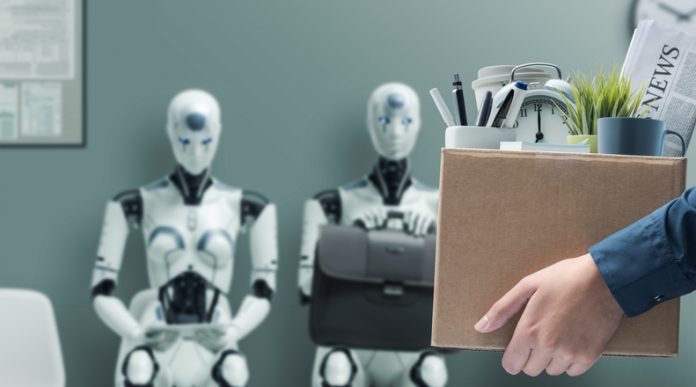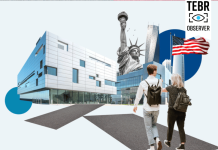By Emil Bjerg, journalist and editor
In an astonishing sequence of events, the tech world witnessed a dramatic exit of Sam Altman from OpenAI, a company he has co-founded and led for eight years. On Wednesday, after five days of Shakespearean drama, he was reinstated as CEO. With the worst chaos seemingly settled, we provide a timeline of the events and examine their potential impact on the ongoing development of generative AI.
Thursday
By last Thursday, few people outside the board at OpenAI would have known what was underway. Thursday evening, Altman spoke to world leaders at the Asia-Pacific Economic Cooperation Summit in San Francisco and later participated in a debate on AI and art in a warehouse in Oakland. According to participants, he seemed relaxed speaking and representing OpenAI.
Friday
Friday, Altman was ousted – on a Google Meet session, with the board citing that the CEO had not been “consistently candid in his communications with the board”.
OpenAI’s Ilya Sutskever played a decisive role in Altman’s firing. Disagreements over AI safety are central to the conflict, with Sutskever said to be concerned over the speed of the company’s commercialisation. On the other hand, Altman has come to represent a wing of OpenAI ready to find ways to monetize the platform, exemplified by the GPT store announced in the recent DevDay.
By now, we know that a part of the conflict between Altman and the board had to do with a research paper board member Helen Toner had co-written. In Altman’s perspective, the research paper was criticizing OpenAI’s safety measures while praising the approach by competitor Anthropic.
We also know that Altman and the board, leading up to his firing, had been bickering for more than a year, the tensions worsening after the mainstream attention the company got with the release of ChatGPT. Besides disagreements over AI safety, challenges to agree over who to appoint as new board members have been deepening the rift between the board and Sam Altman and Greg Brockman on the other side.
Also on Friday, Greg Brockman, president of OpenAI and chairman of the board, was initially removed from his board position and subsequently left the company in solidarity with Altman.
Saturday and Sunday
If Friday’s news was surprising, the news over the weekend was strange. With many employees, including leading researchers, publicly advocating for Altman’s return, it looked like Altman could return as CEO just the day after his firing. Late Sunday, the initial efforts faltered, as a deadline from Altman and employees at OpenAI for the board to resign and reinstate Altman wasn’t met.
Monday
Monday morning brought another surprising update—this one from Microsoft, which just recently started to look vital again with its collaboration with OpenAI.
Satya Nadella, CEO at Microsoft, announced that Altman would get a role as CEO in a new AI research lab. The lab was supposed to set “a new pace for innovation,” seemingly hinting at the safety-over-speed approach that ousted Altman initially. This way, what by Friday looked like an Icarus-like fall for Altman got a comfortable – although temporary – landing.
By Monday, a wave of OpenAI-employees left for Microsoft. Greg Brockman, the former president and chair of the board, temporarily joined, along with him, several high-level researchers ex-OpenAI.
In a continuation of the drama by Monday afternoon, 700 employees at OpenAI – nearly every single one – threatened to leave OpenAI to follow Altman. “Microsoft has assured us that there are positions for all OpenAI employees at this new subsidiary should we choose to join,” the open letter reads. For a few days, it looked like Altman had found his first several hundred employees if Microsoft would actually open its doors to an OpenAI exodus.
At the same time Monday, Ilya Sutskever, initially pushing for Altman’s exit, took to X on Monday to repent: “I deeply regret my participation in the board’s actions. I never intended to harm OpenAI”, Sutskever wrote. Further, Sutskever promised to “do everything I can to reunite the company.”
In one of this story’s many ironic twists, for Sutskever, that meant signing the open letter for Altman’s return. Joining more than 700 colleagues in pushing for Altman’s return, the pressure on OpenAI’s board grew by the hour.
Meanwhile Monday, OpenAI’s board appointed Emmett Shear, co-founder of Twitch, as its interim CEO. The shortlived challenge Shear accepted at OpenAI was sizeable: stabilizing a shaken organization under great public scrutiny while continuing groundbreaking work with generative AI in competition with the world’s biggest tech giants. His immediate priority, he stated, was to ensure continuity in service and partnership, particularly with Microsoft.
Shear’s challenge would eventually prove impossible. In his two days as CEO, OpenAI looked like it could implode anytime in its self-inflicted Shakespearean drama.
Tuesday
Tuesday was another day with a lot of work behind the scenes. Of that, most interesting is Satya Nadella’s involvement. Nadella advocated that the governance at OpenAI would have to change and supported Altman. “Irrespective of where Sam is, he’s working with Microsoft,” Nadella noted.
On Tuesday, it began to leak that Altman’s new position at Microsoft wasn’t as fixed as it had seemed the day before. This suggests that the new research unit at Microsoft, clearly attractive to many OpenAI employees, might have been part of a power game by Nadella and Altman to ensure the latter’s return to OpenAI.
Wednesday
In the early hours of Wednesday, Altman tweeted that he’s “looking forward to returning to openai”. Further he let his followers on X know, that everything he did over the past days, was in “service of keeping this team and its mission together”.
Greg Brockman, OpenAI co-founder, returns with Altman. Seemingly eager to get back to work, Brockman tweeted: “Returning to OpenAI & getting back to coding tonight.” Later he posted a photo of him with dozens of happy OpenAI employees in the background while also thanking Nadella for “unwavering support during this trying chapter.”
While the story’s main character, Altman, and his sidekick, Brockman, are back at OpenAI, the new board is still in the making. As of Wednesday evening, the new board consists of Bret Taylor, chair of the board, Larry Summers, and Adam D’Angelo.
Announcing the new board and Altman’s return on Wednesday, OpenAI added: “We are collaborating to figure out the details. Thank you so much for your patience through this.”
While OpenAI figures out the details, the worst drama appears to be over. Let’s have a look at what the last week implies and reveals.
What Are the Key Takeaways?
The unfolding of events has offered a rare glimpse into the different visions existing in the very elite of AI development. As mentioned, Altman’s initial dismissal is believed to be due to a philosophical rift within OpenAI, his focus on commercialization reportedly clashing with existential concerns over AI risks.
With almost all employees backing Altman, the board eventually had no choice but to step back and reinstate Altman as CEO. The unfolding of events points to something true for all organizations: No matter how technical and complex systems a company is building, everything really comes down to the humans building it.
The rift in OpenAI has also revealed how much of the tech ecosystem has come to depend on OpenAI in the service they deliver. Shail Doshi, founder of the AI company Playground, tweeted that every company using OpenAI’s API should be prepared for a service shutdown. Meanwhile, other founders and CEOs were ensuring customers that the rift had no impact on their services.
After almost a week of Shakespearean drama, it’s difficult to precisely estimate the long-term consequences, but it’s clear that the event has significantly altered the internal dynamics and public perception of OpenAI. It is possible that the internal division, now out in the open, will level the playing field and allow established actors (Google, Meta) as well as relative newcomers (Anthropic, New Computer) to catch up with the prominent position OpenAI has fought hard to acquire.
In particular, it looks like Anthropic, founded by Dario Amodei, the former vice president of research at Open AI, could be a significant threat to OpenAI. Anthropic is known for its chatbot, Claude. While OpenAI was split in internal division, Anthropic released a significant update of Claude 2. According to testing by Akkio.com, Claude 2 is close to the quality of GPT-4 and improving quickly.
Anthropic is funded by Amazon, highlighting the deep involvement Big Tech has in the AI race. Besides Anthropic’s Claude, Google’s Bard is ChatGPT’s main competitor. Meta has also released their own large language model, essentially making it an AI race between Microsoft, Amazon, Google and Meta.
And thus, the stage for a dramatic continuation of a highly competitive – and hopefully safe – race to dominate generative AI is set to continue in an intensified fashion.
The main lesson? If anyone claims to know what’s next in OpenAI or the general development of generative AI, don’t believe them.
This article is updated after Sam Altman’s return to OpenAI, Wednesday the 22nd.



































